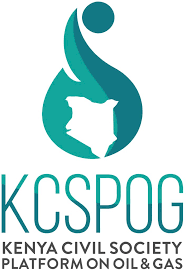Analysis of Tullow half-year results on the Kenya project.
By Rita Maina
FACT:
Tullow Plc released its 2021 half-year results on 15 th September 2021 and overall showed its
commitment to continue pursuing the Kenyan project. The major update is that Tullow and its
Joint Venture (JV) partners are actively seeking a strategic partner before the final investment
decision. They are currently looking for investors who would like access to the East Africa oil
and gas upstream and midstream projects. In a bid to improve the investment prospects of the
project, they have included an additional field, Ekales, in the 1 st phase of the project. The
previous development plans only had Twiga, Amosing, and Ngamia fields (TAN). The ongoing
technical work in Ekales and strategic location which is between Ngamia and Twiga allows it to
be easily incorporated in the first phase. The 1 st phase will target 390 mmbo 1 of the overall 585
mmbo. External international auditors Gaffney Cline Associates issued a Competent Persons
Report confirming the life of the field resources to be 585 mmbo. Tullow and its JV partners are
also planning exploration and appraisal activities to ensure that other discoveries are developed.
Carbon emissions will be limited by combining heat conservation, use of associated gas for
power, and reinjection of excess gas into the reservoir. Tullow and its JV Partners have also
submitted a draft FDP to the Ministry of Energy & Petroleum for their review and are now
working collaboratively with them. They will incorporate their feedback and plan to submit a
final FDP by the end of 2021, in line with license extension requirements provided by the
Government of Kenya in December 2020. The FDP will need to be ratified in parliament before
approval.
The Total CAPEX for the upstream and midstream projects has approximately increased to $3.4
billion. The increase in CAPEX from the previous design is due to a change in the producer to
injector ratio from 2:1 to 1:1 and the addition of the Ekales field to the 1 st phase. These changes
will lead to an increased processing capacity from 100,000 bopd to 130,000 bopd 2 . As a result,
the Kenyan project will require a more extensive processing facility and the drilling of additional
wells. The project will also need a larger diameter crude oil export pipeline to handle the
additional production. It will deliver an extra 30% of resources while lowering the unit cost to
$22/bbl (previously c. $31/bbl).
1 Mmbo- Million barrels of Oil
2 Bopd – Barrels of Oil per Day.
OUR TAKE:
The project’s viability depends on whether Tullow and its JV partners get a strategic partner to
invest in the 1 st phase. In this new era of the energy transition, where oil and gas companies are
diversifying from the exploration and development of fossil fuels, it may be difficult for Kenya
to get an active strategic partner. The project may require the government to give some
economic incentives to make the project more attractive to investors. In addition, it may be good
to combine the Ugandan and Kenyan oil resources to improve the East African oil and gas
industry outlook to financiers.
In the current half-year results, there was an increase of production from 60,000-80,000 bopd to
120,000 bopd. In oil and gas, there is an optimum rate that oil can be extracted from the
reservoir, and if the oil rate is too high, it could result in a brownfield 3 that cannot give any
returns. The project’s CAPEX has also increased because of the additional field in the 1 st phase
(Ekales), the drilling of more wells, and the diameter increase of the crude oil pipeline. These
actions all point to reducing the payback period for any investors in the project. The payback
period is the time, usually in the number of years, required to recover the initial outlay of
investment. According to Wood Mackenzie, the previous project’s payback period was
approximately 17.4 years for block 10BB and 13.2 years for block 13T. This means the current
project’s payback period needs to be less than this to attract investors. The project also includes a
water pipeline from Turkwel dam, which could complicate the overall economics or viability of
the project.
The more extensive crude oil pipeline will be able to handle a production capacity of up to
130,000bopd. Suppose the production profile of the four fields has a short plateau. In that case,
Kenyans will have an underutilized crude oil pipeline and an oversized processing equipment
once the oil rate (bopd) decreases. The plan to explore, appraise and develop the other fields will
need to actualize to increase the project’s viability.
It might be good to adopt a modular refinery near the project site and then transport the
products to the relevant industries and counties. A solar-powered desalination plant, similar to
the one constructed by Eni Kenya BV with collaboration with the Government in Pate island,
can also be built to provide water to the Turkana community and the refinery. The refined crude
oil would significantly boost the Kenyan manufacturing industries and reduce the dependence on
3 A mature field or a field whose production has started to decline
imported oil. Tullow and its JV partners should look into selling the crude oil to Kenyans instead
of selling it in the international market.
Figure 1 : Oil rig and a small modular oil refinery

